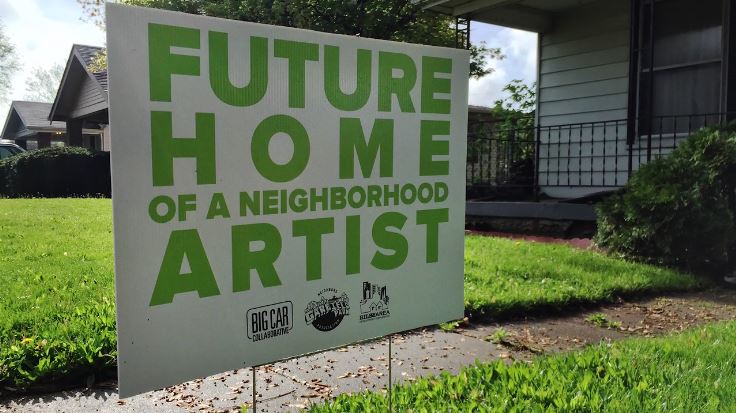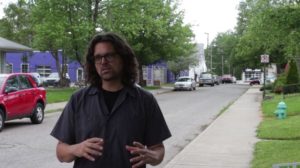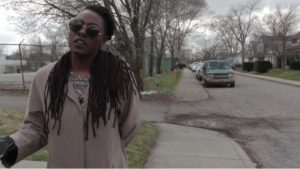Indianapolis, Indiana, says Jim Walker, tends to be just a little behind the curve when it comes to urban trends in the U.S. For artists threatened by gentrification, that could be a good thing.
Walker is co-founder and CEO of Big Car Collaborative, a nonprofit arts organization that’s embarking on an initiative to preserve affordable housing for artists in the city’s Garfield Park neighborhood.
With it, he thinks the neighborhood has a chance to buck the usual gentrification dynamic: artists move into struggling areas, contribute to beautification and cultural development, and wind up being priced-out in a few years.
As were so many other neighborhoods in the US, it was bisected by a badly-planned urban interstate highway (I-65) some 60 years ago, and hit hard more recently by the Bush administration’s 2008 housing crisis and national recession. Garfield Park thus has an abundance of vacancies. But while artists can afford to buy or rent that inexpensive housing now, in a few years, as property values rise and a bus rapid transit line comes to the main drag, they could be pushed out alongside many longtime residents.
To prevent that, Big Car has partnered with the Riley Area Community Development Corporation and the Indianapolis Neighborhood Housing Project to purchase and rehab 10 vacant houses on Cruft Street, a short stretch that starts at Shelby Street, the main drag, and dead-ends at I-65.
Artists are applying now to buy those houses, with a twist: Big Car and partners will retain ownership of 51 percent of the house, artists will purchase the other 49 percent, and the organizations will maintain the homes’ affordability even if surrounding property values increase.
From the Big Car website on the Artist & Public Life Residency program:
Located in the Garfield Park neighborhood of Indianapolis, Indiana, this long-term ownership residency program is an innovative approach to supporting artists who use their talents and skills to help drive positive change in the community. Our goal is to allow artists enjoyable and equitable home ownership while they work, in part, to collaborate with other neighbors and boost the culture, creativity, diversity, livability, safety, health, and economy of the local and greater community.
The houses used in this program were previously vacant, some for a long time. No existing residents were displaced. And these efforts are happening in partnership with current residents as a way to work together to further strengthen the neighborhood and keep affordable housing for artists in place. Others are also working on strategies for affordable housing in general in the area.
Our focus is with artists because Big Car Collaborative is an arts organization working in partnership with a nonprofit community development corporation to support the neighborhood where we’re based and, with multiple staff members, live.
For this program, we view the label of artists broadly to include creatives, makers, designers — anyone who considers themselves an artist. Fields may include — and are not limited to — architecture, culinary art, curation, visual art, public art, furniture, fashion, craft, design, film and video, creative writing and journalism, performing arts, music, theater, placemaking, socially engaged art, etc.
Ultimately, we will be teaming up with resident artists who see their work with the public — and their work for the benefit of the community — as at the core of their practice and their production as artists. We’re looking for artists who want to make a difference, as artists and neighborhood leaders, and see this work in support of the community as truly part of their art.
Images courtesy of Big Car Collaborative.



